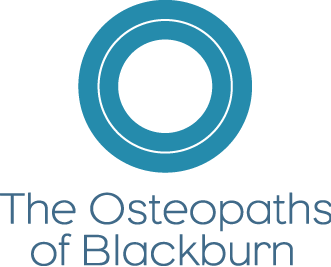Rotator Cuff Pathology
A condition we often see in the clinic is ‘rotator cuff pathology’. It’s a really common, sometimes debilitating cause of shoulder pain and can affect people of all ages.
Patients usually present to us suffering from pain, weakness, and restricted shoulder motion. Pain is usually felt over the front or side of the shoulder and is often made worse with overhead activities like hanging out the washing or lying on the affected shoulder at night. In practice, we make a diagnosis through taking a patients history, an examination with special tests, and sometimes a referral for imaging/scans.
So what is the rotator cuff?
The rotator cuff are a group of muscles that surround each shoulder blade (scapula) called the supraspinatus, infraspinatus, subscapularis, and teres minor. Their job is essentially to stabilise the shoulder or glenohumeral (GH) joint so that the bigger shoulder muscles like the deltoid and latissimus dorsi can move our arm without too much sloppiness in the joint. This area can be problematic and is prone to injury ranging from acute tendinitis to muscle tears.
The shoulder is a complex piece of our anatomy and depends on all its bits and pieces working together properly. Synchronisation between our joints and muscles need to be in working order for us to move freely and effectively day to day playing sports, gardening, carrying children and even sitting down at work. If there is disruption to shoulder biomechanics, rotator cuff pathology can occur.
So why does injury arise?
In young people it is often caused by repetitive activities such as serving in tennis, lifting weights, throwing, holding and lifting babies, poor posture or a history of trauma. In older people, shoulder pain can come on more gradually and can often have no obvious cause and may be due to age-related degeneration. Mechanically, a variety factors can contribute to rotator cuff injuries which I’ve detailed below.
Imbalance: The main supporting muscles of the shoulder complex are the rotator cuff as well as the teres major, rhomboids, serratus anterior, trapezius and levator scapula. If there is tightness with any of these muscles, impairing balance is it can result in overuse of certain muscles. The result is sometimes overuse injury of the rotator cuff muscles and tendons.
Weakness or insufficiency: Weakness of the rotator cuff muscles over time can cause stress and stretching of the joint capsule causing shoulder laxity and greater demands on the already weak rotator cuff muscles. This change can lead to rotator cuff impingement and pain. To make matters worse, pain itself can reduce rotator cuff muscle activity, leading to further weakening of the muscles.
Impingement: The rotator cuff is surrounded by a small boney subachromial arch which if compromised such as it is during poor posture or underlying boney irregularity, this can impinge or squish the tender contents. Ouch!
Instability: Ligamentous laxity may happen by repetitively over stretching the joint, such as in swimmers, dancers and tennis players. Stability may be lost if the shoulder becomes de-conditioned following a break from activity. As a result, a cycle of instability, less use, more muscle weakness, and more instability perpetuates.
Is there treatment?
Yes. Most rotator cuff pathology respond well to conservative treatment but does take time. Treatment targeted at the root cause of the problem ensures less chance of injury relapse and a faster recovery. In the clinic we see every patient as a unique case with multiple factors influencing their rotator cuff injury.
Firstly, we need to control pain and inflammation to allow healing. This is usually with a combination of relative rest, icing and possibly medication. Osteopathic treatment assists with improving range, flexibility of the shoulder and postural biomechanics working through the neck, mid-back as well helping to restore normal scapular motion. This can help to assist with reducing micro-trauma and inflammation that could lead to further scarring, muscle spasm and pain.
We offer advice on exercises that are important to normalise strength and muscle control as well as joint stabilisation.Strengthening should be in a pain-free range and help you obtain smooth motion.
In some cases, other treatment may include corticosteroids via an injection or even surgical treatment. This may be necessary for tears in an active individual who does not have any improved pain or function usually after 3-6 months treatment.
Do I need to have treatment?
When treatment is deferred in rotator cuff injuries and shoulder discomfort persists, the patient can develop adhesive capsulitis or ‘frozen shoulder’. This is where the patient limits the use of the shoulder because of pain, leading to soft-tissue tightness and sometimes severe immobility and stiffness. The chance of developing adhesive capsulitis can be lessened if a diagnosis such as rotator cuff injury is recognised and is managed appropriately.
How do I prevent it?
Postural biomechanics are important. Poor posture like excessive stooping or slumping and rounder shoulders increases risk for rotator cuff impingement. Proper technique during activities and postural awareness can include improved ergonomic set up at the desk, or technique while working or throwing a ball. Proper trunk and lower extremity strength can reduce stress on the shoulder muscles and maintenance exercises after recovery to help prevent symptoms.
If you or someone you know are suffering with shoulder pain please make an appointment at The Osteopaths where we can help guide you through the recovery process.

